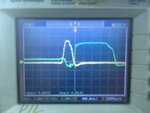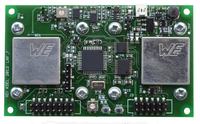danishkaleem
Newbie level 6

i am making a laser range finder.
the receiver i have made is showing a lot of fluctuations in the received pulse. (10-20 ns)
can anyone tell me a solution to it.
i am using two stage amplification..
in first stage:
transimpedance amplifier:
op amp: AD829
in 2nd stage:
voltage amplifier
op amp: LM6361
the photodiode used is S1223 from HAMATSU..
Danish.
the receiver i have made is showing a lot of fluctuations in the received pulse. (10-20 ns)
can anyone tell me a solution to it.
i am using two stage amplification..
in first stage:
transimpedance amplifier:
op amp: AD829
in 2nd stage:
voltage amplifier
op amp: LM6361
the photodiode used is S1223 from HAMATSU..
Danish.






